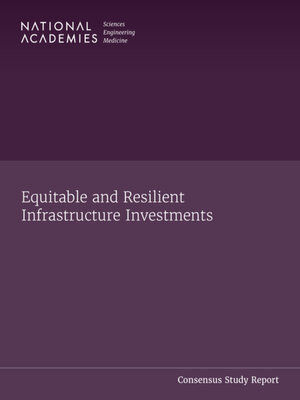Equitable and Resilient Infrastructure Investments
ebook
By National Academies of Sciences, Engineering, and Medicine

Sign up to save your library
With an OverDrive account, you can save your favorite libraries for at-a-glance information about availability. Find out more about OverDrive accounts.
Find this title in Libby, the library reading app by OverDrive.



Search for a digital library with this title
Title found at these libraries:
| Loading... |
<p>Communities across the United States are subject to ever-increasing human suffering and financial impacts of disasters caused by extreme weather events and other natural hazards amplified in frequency and intensity by climate change. While media coverage sometimes paints these disasters as affecting rich and poor alike and suggests that natural disasters do not discriminate, the reality is that they do. There have been decades of discriminatory policies, practices, and embedded bias within infrastructure planning processes. Among the source of these policies and practices are the agencies that promote resilience and provide hazard mitigation and recovery services, and the funding mechanisms they employ. These practices have resulted in low-income communities, often predominantly Indigenous people and communities of color, bearing a disproportionate share of the social, economic, health, and environmental burdens caused by extreme weather and other natural disasters.</p>
<p>At the request of the Federal Emergency Management Agency (FEMA), the Resilient America Program of the National Academies of Sciences, Engineering, and Medicine convened the Committee on Applied Research Topics for Hazard Mitigation and Resilience to assist the FEMA in reducing the immense human and financial toll of disasters caused by natural hazards and other large-scale emergencies. FEMA asked the committee to identify applied research topics, information, and expertise that can inform action and collaborative priorities within the natural hazard mitigation and resilience fields. This report explores equitable and infrastructure investments for natural hazard mitigation and resilience, focusing on: partnerships for equitable infrastructure development; systemic change toward resilient and equitable infrastructure investment; and adaptations in finance and financial analysis.</p>






